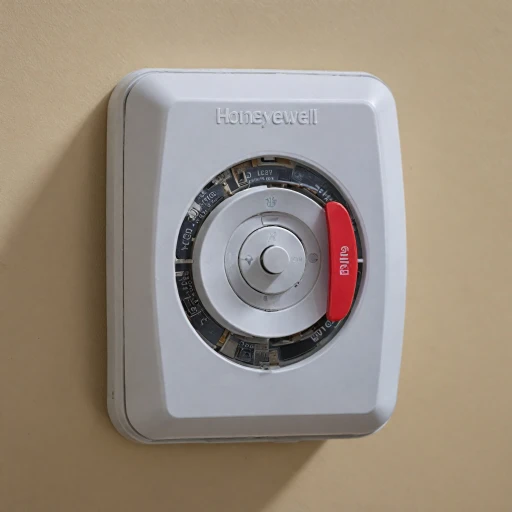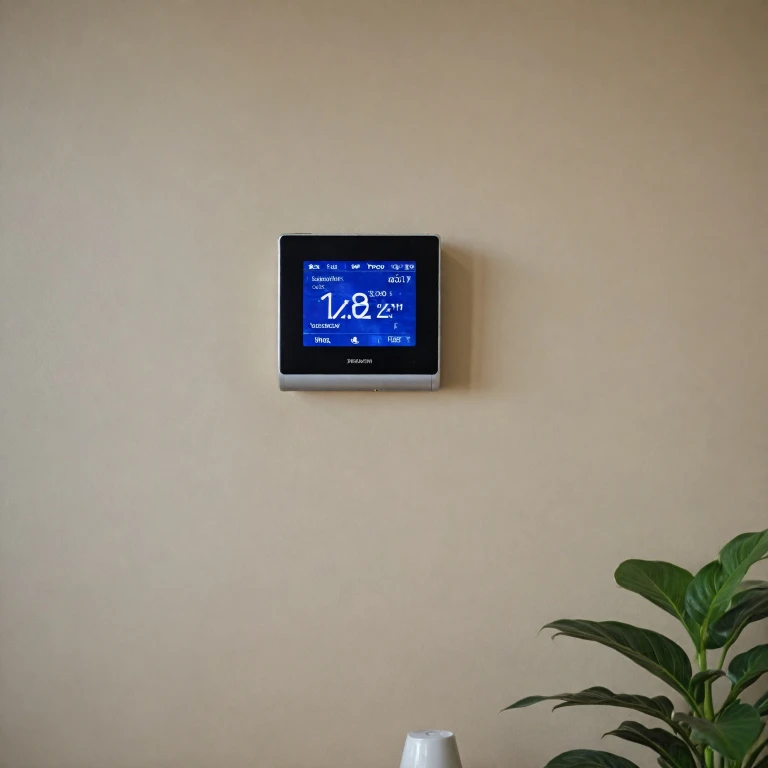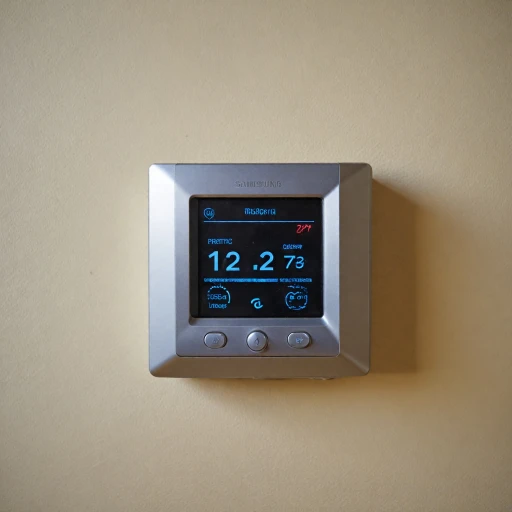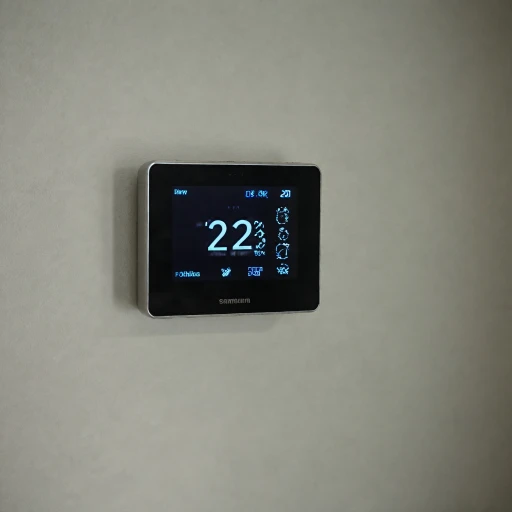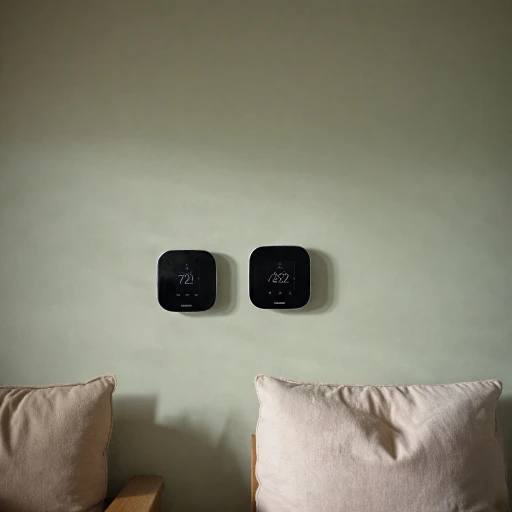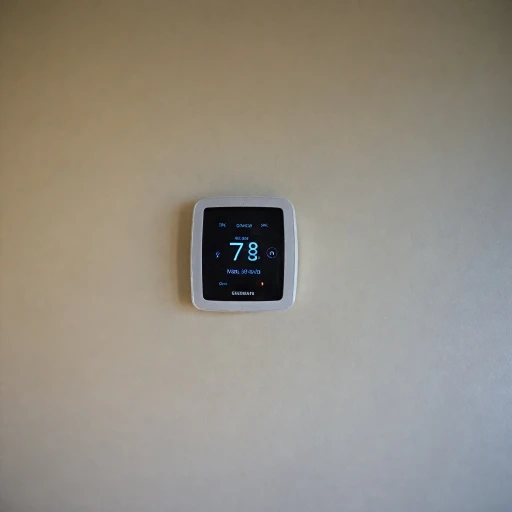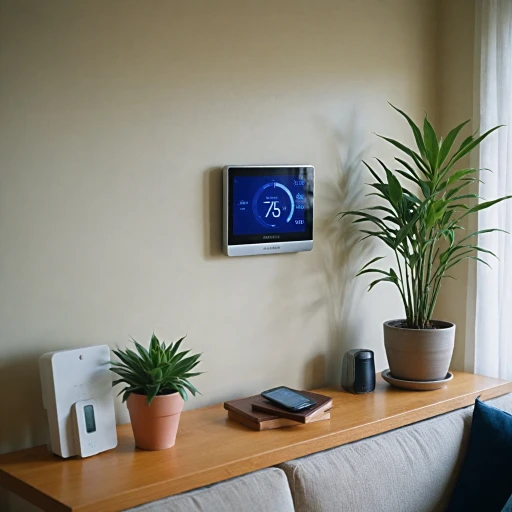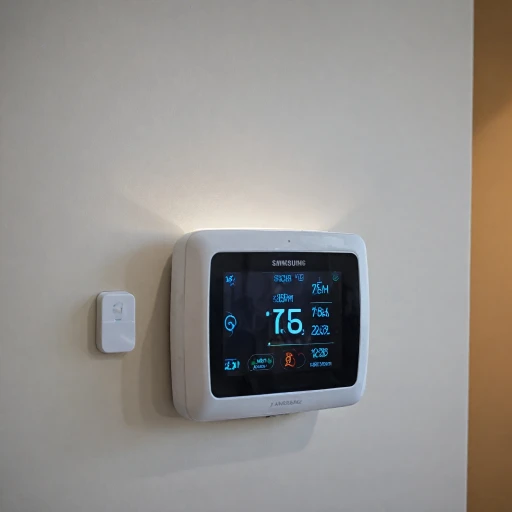The Basics of Smart Thermostats
An Overview of Smart Thermostats
Smart thermostats are revolutionizing the way we interact with our home's heating and cooling systems. These devices offer more than just a digital interface to control temperature; they integrate advanced technology to learn user preferences, optimize energy use, and enhance overall comfort. Their functionality is driven by connectivity and data-driven algorithms that offer insights into energy consumption patterns. Google Nest, for instance, is a prominent player in this space, widely recognized for its intuitive design and ease of use.
The installation guide for these devices often involves addressing compatibility with existing heating and cooling systems. Features of smart thermostats, like the Nest Learning Thermostat, center around their ability to "learn" routines—boosting efficiency by adjusting settings based on past behavior.
Despite the simplicity these thermostat systems promise, internal wiring or power source complications can arise. For instance, issues with thermostat wiring, such as insufficient power provided by the existing wires or a mismatch with the transformer, are common hurdles that consumers face during installation. Understanding the specifics of thermostat wire management, such as how to connect the connector wire properly, is crucial to seamless operation.
For homeowners, installing a nest thermostat demands some technical knowledge, especially when dealing with zones featuring a zone valve for controlled temperature distribution. To help, many guides and posts delve into smart thermostat nuances, ensuring that users can manage their heating cooling systems effectively. These advanced thermostats offer comfort, energy savings, and control, setting the foundation for future innovations in smart home technology.
Introduction to the Google Nest Power Connector
Revolutionizing Smart Home with Google Nest Power Connector
The Google Nest Power Connector plays a pivotal role in optimizing the efficiency and functionality of smart thermostats. Simply put, it serves as an essential lifeline for your Nest thermostat, ensuring it has consistent power to operate effectively. One common challenge faced by users is the lack of a "C" wire, often required for newer smart thermostats. That's where this power connector comes in, cleverly bypassing such limitations.
When you install a Google Nest thermostat, it requires a steady power supply to harness its full potential. Traditional thermostat wiring can be inadequate since it lacks a dedicated power wire, often necessitating an additional connector wire. The Nest Power Connector is designed to bridge this gap, making it easier for homeowners to integrate smart technology into their existing systems without the need for extensive rewiring.
During installation, the power connector is connected alongside your existing thermostat wires, integrating seamlessly with the current setup. This makes the installation process significantly less daunting, even for those not highly skilled in electrical matters. It eliminates the need to run additional wires through walls, simplifying the setup process. The power connector also reduces stress on the system's transformer, ensuring your heating and cooling systems remain efficient and operational.
For those exploring smart home technology, the connector supports various Nest thermostats, including the Nest Learning Thermostat and the Nest Thermostat Gen models. It allows these devices to optimize energy usage by providing real-time data on system performance and adjusting settings accordingly.
In the realm of smart home devices, the Google Nest Power Connector not only helps connect your thermostat but also enhances the control and efficiency of your home's ecosystem, making your thermostat experience more reliable and seamless.
Compatibility and Installation Challenges
Installation Considerations and Potential Challenges
When it comes to incorporating the Google Nest Power Connector into your smart home system, understanding compatibility and installation nuances is key. Nest thermostats, including the Nest Learning and Nest Thermostat Gen models, have specific wiring requirements that need careful attention.
One of the primary concerns during installation is ensuring compatibility with your existing HVAC systems. Not all systems may support the direct connection of a Nest thermostat without additional wiring help. It’s essential to evaluate your current wiring setup, particularly when it involves older thermostat wires or systems without a C-wire, otherwise known as a common wire. The absence of a C-wire can complicate the installation, as the Nest Power Connector serves as an intermediary to bypass this issue.
If your system lacks a C-wire, the Nest Power Connector steps in to provide a stable power supply to your thermostat, ensuring that it operates efficiently. This is particularly important for thermostats in complex systems with zone valves or in setups where the control might suffer from reduced power without a supplementary wire.
Moreover, the potential for transformer incompatibility needs to be addressed. Ensuring your system can handle the additional power demands of the Nest Thermostat is vital. Consulting an installation guide can clarify these requirements, ultimately leading to a smoother installation process.
During the connector installation, identifying the correct connector wire placements in your stat’s control board can be daunting. Avoid errors by closely following installation manuals or seeking help from a professional. This prevents damage to the thermostat and avoids unnecessary power interruptions during the power connector installation.
Overall, while the Nest Power Connector significantly enhances the adaptability of Nest thermostats, preparing for possible installation challenges can alleviate frustrations. For further insights on integrating smart technologies, consider exploring the
multiple benefits of incorporating Ecobee thermostat sensors as well.
Enhancing Energy Efficiency with the Power Connector
Maximizing Efficiency through Optimal Power Connection
A smarter home is an efficient home, and with the integration of devices like the Google Nest, achieving energy efficiency becomes attainable. The Nest Power Connector plays a pivotal role in optimizing this effort by ensuring a stable power flow, which impacts how effectively the nest learning thermostat can manage your home’s temperature.
When properly installed, the Nest power connector addresses common power issues associated with heating and cooling systems that lack a C-wire. This missing link can sometimes disrupt the thermostat operation, impeding its ability to deliver optimal control over your HVAC system.
An uninterrupted power supply achieved through the installation of the power connector greatly enhances the accuracy and consistency of the nest thermostat’s operation. By ensuring a continual current, the Google Nest can regulate climate settings seamlessly, adapting its learning capabilities to fine-tune temperature adjustments based on daily habits.
Moreover, reducing the frequency of power-related malfunctions can prolong the life of your thermostat. A reliable connection safeguards not just the operation of the device, but also the efficiency of energy use. This synergy ultimately lowers energy bills by preventing unnecessary power surges or drops.
The inclusion of advanced components like the Nest Power Connector in your thermostat installation guide symbolizes a shift towards smarter home systems. Its presence contributes to a connected environment where control is smooth and user-centric. As Google continues to evolve their suite of products, the focus remains on enhancing user experiences through seamless integration, making the nurturing of energy efficiency more attainable than ever.
User Experiences and Feedback
Users Share Their Smart Thermostat Stories
Smart thermostats, such as the Nest series, have changed how members of households interact with their heating and cooling systems. Many users report enhanced control over their home environment and a noticeable improvement in energy efficiency thanks to smart thermostat installations.
One frequent topic of discussion is the integration of the Google Nest Power Connector in their setups. Users often praise the connector's ability to resolve power issues that arise from systems with no common wire (C-wire). This additional boost helps ensure continuous power to the thermostat, reducing the need for inconvenient battery changes.
However, installation challenges can sometimes overshadow these benefits. Discussion threads show that some users face issues with thermostat wiring, especially in older homes where wiring systems are outdated. A key learning point from these posts is the necessity of adapting installation methods to accommodate diverse wiring scenarios, such as zone valve systems, which might require professional help in some cases.
Additionally, users have expressed satisfaction with the connector's role in improving the learning capabilities of their Nest Learning Thermostat. By ensuring stable power, the learning thermostat can maintain its advanced features—like adaptive temperature control—without interruptions.
There is a wealth of experience available online, with many users contributing authentic feedback about their personal journeys with Nest thermostats. These narratives often highlight the importance of following installation guides meticulously to prevent wiring mishaps.
In community forums, some suggest considering professional installation if unsure about thermostat gen compatibility or transformer issues. Ultimately, reading about these real-world experiences can provide valuable insights for prospective smart thermostat users and aid in smoother adoption of these advanced technologies.
Future Trends in Smart Thermostat Technology
Future Directions in Smart Thermostat Innovations
With the advent of products like the Google Nest and its accompanying features such as the power connector, the smart thermostat arena is witnessing significant transformations. The industry is expected to evolve with advancements in technology, enhancing both functionality and user experience.
One anticipated trend is the greater integration of artificial intelligence and machine learning. This will allow thermostats to become more intuitive and adaptive, learning user preferences over time to optimize heating and cooling systems automatically. This can lead to better energy efficiency without requiring constant user intervention.
As compatibility with various HVAC systems expands, manufacturers are likely to address the current challenges in installation and wiring. This includes simplifying installation guides and ensuring that connectors like the Google Nest Power Connector are more universally adaptable, potentially eliminating the need for additional installation help.
Additionally, the adoption of systems that support integration with other smart home devices is on the horizon. As homeowners seek seamless control over their household gadgets, nest thermostats may soon be able to interact more effectively with lighting, security, and entertainment systems.
The user feedback loop continues to be pivotal. Insights from consumers will drive innovation, prompting manufacturers to refine their products for enhanced user satisfaction. Real-world experiences often highlight the practical benefits and unforeseen challenges users face, guiding the development of more robust and user-friendly solutions.
While these technological strides promise to enhance user experiences, they also emphasize the importance of ensuring secure and privacy-respecting systems. As smart thermostats become an integral part of home management, maintaining trust through secure data handling practices will be crucial.
Overall, as new developments unfold, the role of the power connector will likely become even more central, ensuring that smart thermostats continue to offer reliable and efficient control over home environments.
